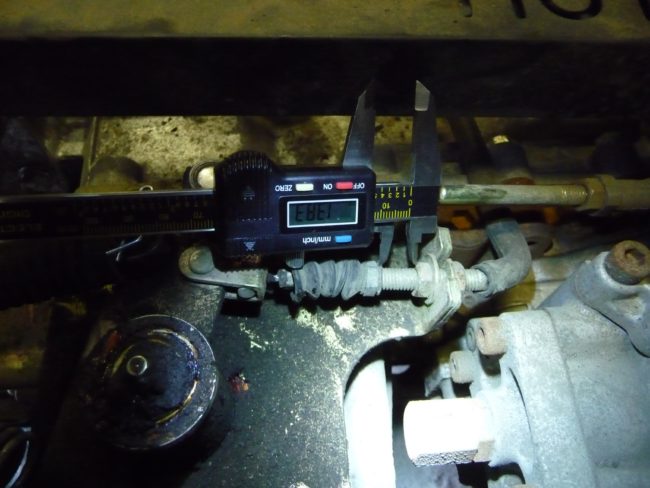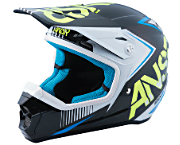© by Bill Uhl, Court-Qualified Expert Witness and Safety Trainer
regarding ATVs, UTVs, Side-by-Side, snowmobiles and motorcycle dirt bikes
Improper off-highway vehicle maintenance caused or contributed to accidents in the vast majority of over 80 incidents I’ve investigated as an Expert Witness. This relationship is one reason manufacturers of off-highway vehicles (OHVs) such as all-terrain vehicles (ATVs, quads, four-wheelers), utility terrain vehicles (UTVs, side by sides, SxS), recreational off-highway vehicles (ROVs), recreational utility vehicles (RUV), motorcycles and snowmobiles, tell vehicle owners that ongoing maintenance is required for the good of the vehicle and the safety of operators and passengers. Manufacturers’ warnings are supported by a long history of problems causing incidents, plus records indicating that timely, proper maintenance prevents accidents and injuries.

Most manufacturers provide pages of charts in owner’s and operator’s manuals about what operators need to maintain and how often. Look in the index under “maintenance” of the manual of the vehicle involved in your case. Explore the manufacturer’s guidelines regarding maintenance and safety. If you are an ATV, UTV, Side-by-Side, Snowmobile or Motorcycle Dirt Bike operator, discover clear requirements about how often to perform essential, potentially life-saving work on your vehicle.
Most owner’s and operator’s manuals are divided into sections related to time or miles on the vehicle, whichever comes first. Notice how important it is to complete recommended maintenance, even if the vehicle is seldom used. Also note that the owner / operator will have to step up the maintenance program if they frequently use the vehicle in harsh conditions. International competitors for all OHV vehicles are quite clear about the importance of systematic, ongoing maintenance.
HOW DOES THE OPERATOR KNOW WHAT TO DO AND WHEN?
If you are the owner or operator of the OHV, please note: Owner’s and operator’s manuals show the minimum maintenance necessary to keep your vehicle safe and in good working order under what manufacturers consider normal operation.
Most manufacturers even provide a place to store the manual with your vehicle. This is because the manual is considered a permanent part of the vehicle. Anyone using the vehicle should have access to the safety and maintenance information contained within this manual. Qualified OHV vehicle safety trainers educate their students about how to use their owner’s / operator’s manual when the safety trainer provides ATV, UTV, snowmobile, motorcycle and other ROV safety training.
The maintenance we’re talking about is often preventive maintenance. Much of it can be done with the tools that come with the purchase of a new vehicle, except for checking the torque on different nuts and bolts. In that case, operators can tighten things enough so they can get home safely with the tools they have on hand in their vehicle. Then they can either buy a torque wrench or take the vehicle into their dealer and have them adjust the torque on the bolts and nuts.
Manufacturers tell owners to perform certain maintenance on their machines because adjustments change over time as parts start to wear with use. For both safety and operational reasons, ongoing maintenance is absolutely necessary to keep your vehicle operating within the manufacturer’s specifications. This is an area I cover in depth as an OHV safety trainer.
Think for just for a moment about the many things that can come loose or go out of adjustment on your vehicle. Reflect on the effects of this possibility. How can these changes affect your safety and the safe operation of your vehicle? How much longer will your vehicle last if you perform preventive maintenance?
Having your vehicle break down during an outing far from your place of departure is not only inconvenient, it can be quite dangerous, especially if the conditions aren’t ideal. At a minimum, you may spend an unexpected, very uncomfortable night out. You may be stranded and alone.
Although I could give you a list of what to check, I’m not going to. It’s better for you to go find the owner’s manual because it covers specifically what your vehicle needs, rather than looking at a general list that could apply to all types of vehicles and equipment. Find your manual. Discover what maintenance is required. Post a timeline or use a technological device to remind you about the best maintenance schedule to follow. Begin now to keep your vehicle safe and in good working order.
Keep good maintenance records on the pages that are provided in the back of most manuals. Add additional pages as needed. This will help you cross check your work so you can make sure everything gets done on time and in the correct order. Also conduct a thorough pre-ride inspection. (Click here to read about doing a pre-ride inspection.)
EXAMPLES OF HOW MAINTENANCE ENSURES SAFETY AND PREVENTS ACCIDENTS
Whether you use an ATV, UTV, Side-by-Side, snowmobile, motorcycle or other OHV for work or play, you’ll want to stay safe and ensure your vehicle lasts as long as possible, in good working order. The examples below show you why it’s so important to prevent accidents and injuries with proper maintenance.
1. Let’s say you pull a wheel off your vehicle for some reason. When you’re putting it back on, something more urgent distracts you, so you have to abandon your project that day. When you return to your task, you’re in a hurry and you forget to finish tightening the lug nuts. Imagine what could happen if that wheel came loose at the exact wrong moment, like when you’re driving around some rim rock with a 500-foot drop to a creek below.
2. You’re beginning to descend a steep, narrow, very long ridge. The seep in your brake line that you’ve been putting off fixing stops seeping and becomes a gusher. With one application of your brakes, all of your brake fluid disappears. You have no brakes in which to stop the vehicle. Think about the potential danger if you fail to fix that seep in your brake line system. You might not get a second chance on this one.
3. You haven’t checked the condition of your tires or checked to see if they’re correctly inflated after sitting for months. You go out to ride an area you go to often because it’s close to your home and you know it well. To get from one side of the riding area to the other side, you have to travel across a hillside that’s covered with a tight grove of trees to the bottom side of a slanted trail on which you have to cross the slope on. You have total confidence that you can safely cross the slope. You’ve done it hundreds of times in the past.
Today, two new elements exist at the crossing:
- A cloud burst over the riding area the week before created a small gully when water rushed down the hillside. The gully is about 6” deep and 12” wide.
- One of your front tires lost 2 pounds of air. One of your rear tires is as hard as a rock because it was still way over-inflated since the last time it was checked (months ago).
Although you had no problems getting into the area, on your way out, your vehicle rolls down the hillside into the trees.
Ask yourself this question: What was different when you crossed the very same hillside this time that you traveled earlier to get into the area? What created the rollover when you exited the area following the tracks left from your first crossing?
Note: The correct answer to the question above could not only protect your equipment, it could also save your life.
ACT NOW TO ENSURE SAFETY AND PREVENT ACCIDENTS AND INJURIES
Please carefully consider what you’ve read in this article. Any of the above failures can result in grave dangers to an OHV operator. ATV accidents can lead to severe personal injury or death as well as damage to your OHV, other riders and bystanders.
NOTE: This article provided information for both attorneys working on OHV cases and owners and operators of OHVs. The article is not intended to be all inclusive. It is designed to provide a foundation for the reader to learn from.
Bill Uhl is a Safety Trainer and Court-Qualified Expert Witness for cases involving all-terrain vehicles (ATVs), utility vehicles (UTVs / side by sides, SxS), ROVs, OHVs, snowmobiles, motorcycle dirt bikes, dual sport bikes, off-road bicycle trails and guided tours. Uhl has completed over 80 cases while serving as an Expert Witness, working for both plaintiffs and defendants, including providing trial testimony. Click here now for more information about Mr. Uhl. You can contact him here for a complimentary 15-minute consultation, his CV, fee schedule and letters of recommendation from other attorneys.


